Family: Xyelidae
Family common name: xyelid sawflies
Subfamily: Macroxyelinae
Tribe: Xyeleciini
Genus: Xyelecia Ross, 1932
Subgenera: none
Most phylogenies position Xyelidae as the most primitive family of all Hymenoptera. The xyelids are usually associated with a primitive plant group, coniferousconiferous:
describing a conifer
trees (Ross 1932, Blank and Kramp 2017Blank and Kramp 2017:
Blank SM and Kramp K. 2017. Xyela davidsmithi (Hymenoptera, Xyelidae), a new pine catkin sawfly with an unusual host association from the Sierra Nevada. Proceedings of the Entomological Society of Washington 119 (Special Issue): 703-717.). The Macroxyelinae subfamily, however, is associated with angiosperms, and is likely the most primitive group of extantextant:
in existence; opposite of extinct
sawflies in the world (Smith and Schiff 1998Smith and Schiff 1998:
Smith DR and Schiff NM. 1998. The genera Macroxyela Kirby and Megaxyela Ashmead (Hymenoptera: Xyelidae) in North America. Proceedings of the Entomological Society of Washington 100 (4): 636-657.).
Xyelecia adults are about 6–10 mm in length, with distinctive facial markings and a relatively short ovipositorovipositor:
the female organ that deposits eggs and is used to drill into plant tissue, located at the apex of the abdomen, made up of the lance and lancet
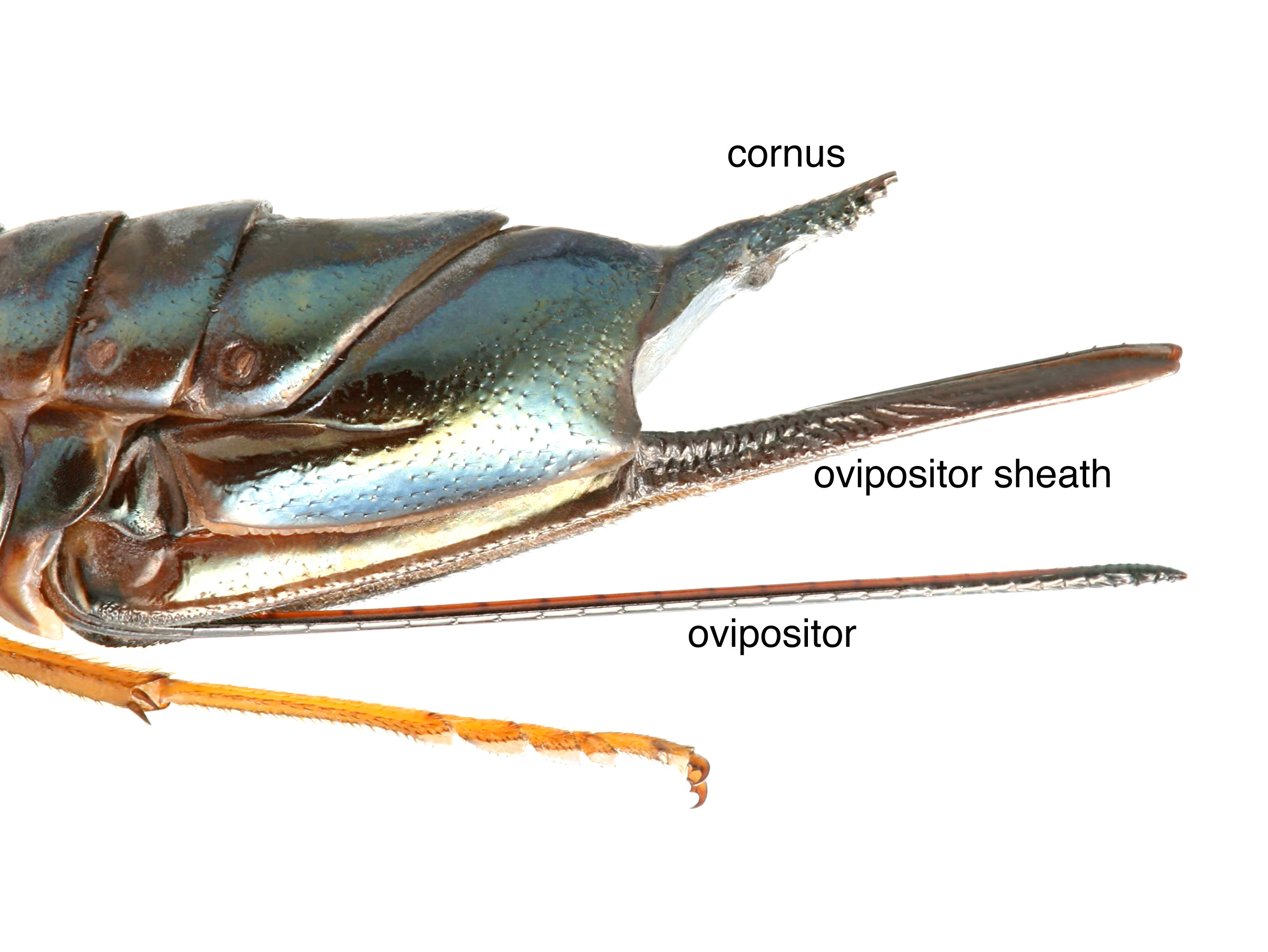 sheath. This genus is fairly rare and not often observed (Smith 1964Smith 1964:
sheath. This genus is fairly rare and not often observed (Smith 1964Smith 1964:
Smith DR. 1964. Description of the male of Xyelecia nearctica , with comments on the genus (Hymenoptera: Xyelidae). The Pan-Pacific Entomologist 40 (1): 54-56., Smith 1967).
There are only two described extantextant:
in existence; opposite of extinct
species worldwide. One occurs in North America (Taeger et al. 2010Taeger et al. 2010:
Taeger A, Blank SM, and Liston AD. 2010. World Catalog of Symphyta (Hymenoptera). Zootaxa 2580: 1-1064.).
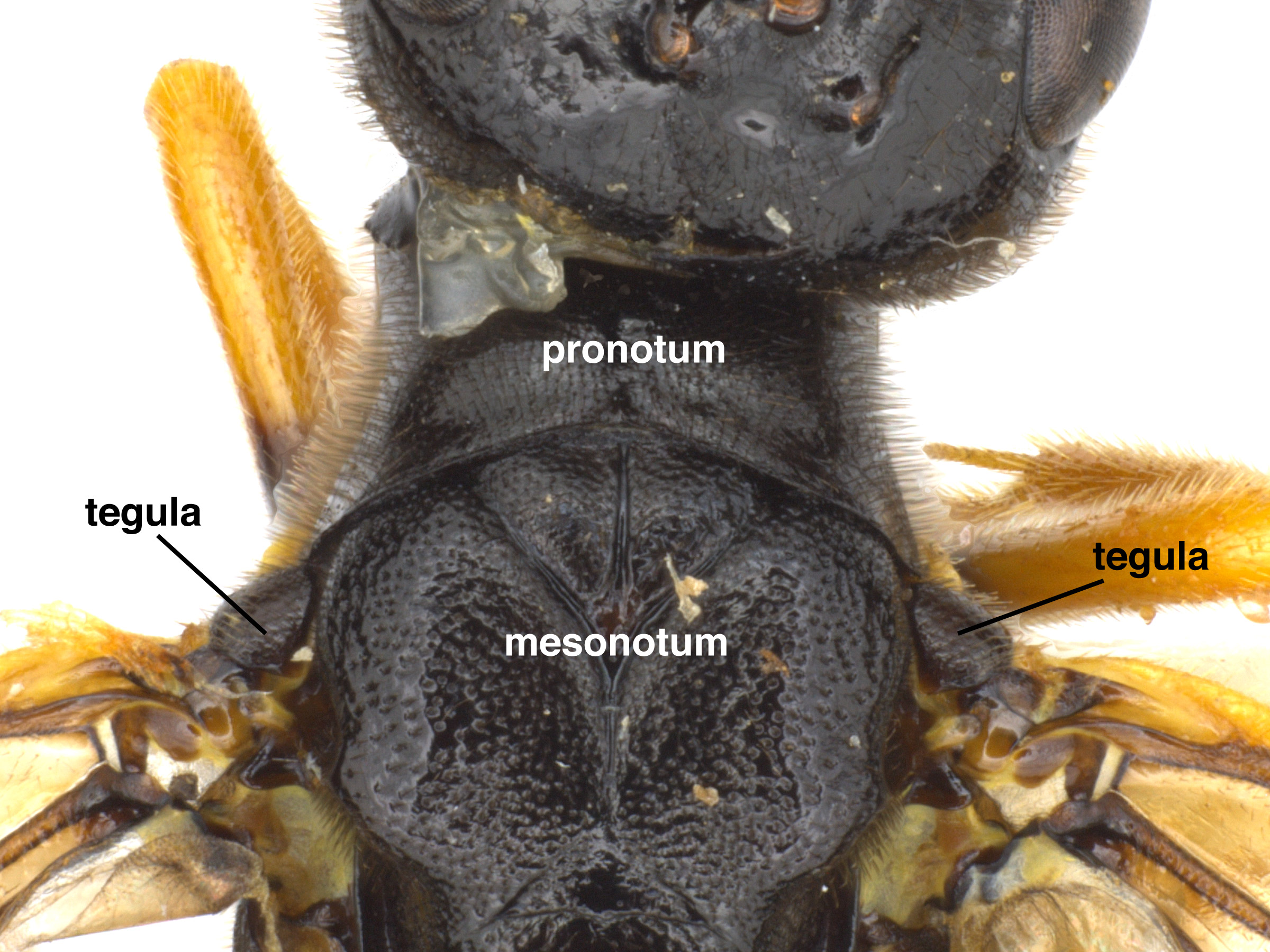 slightly constricted in the center, as seen from above (Goulet 1992Goulet 1992:
slightly constricted in the center, as seen from above (Goulet 1992Goulet 1992: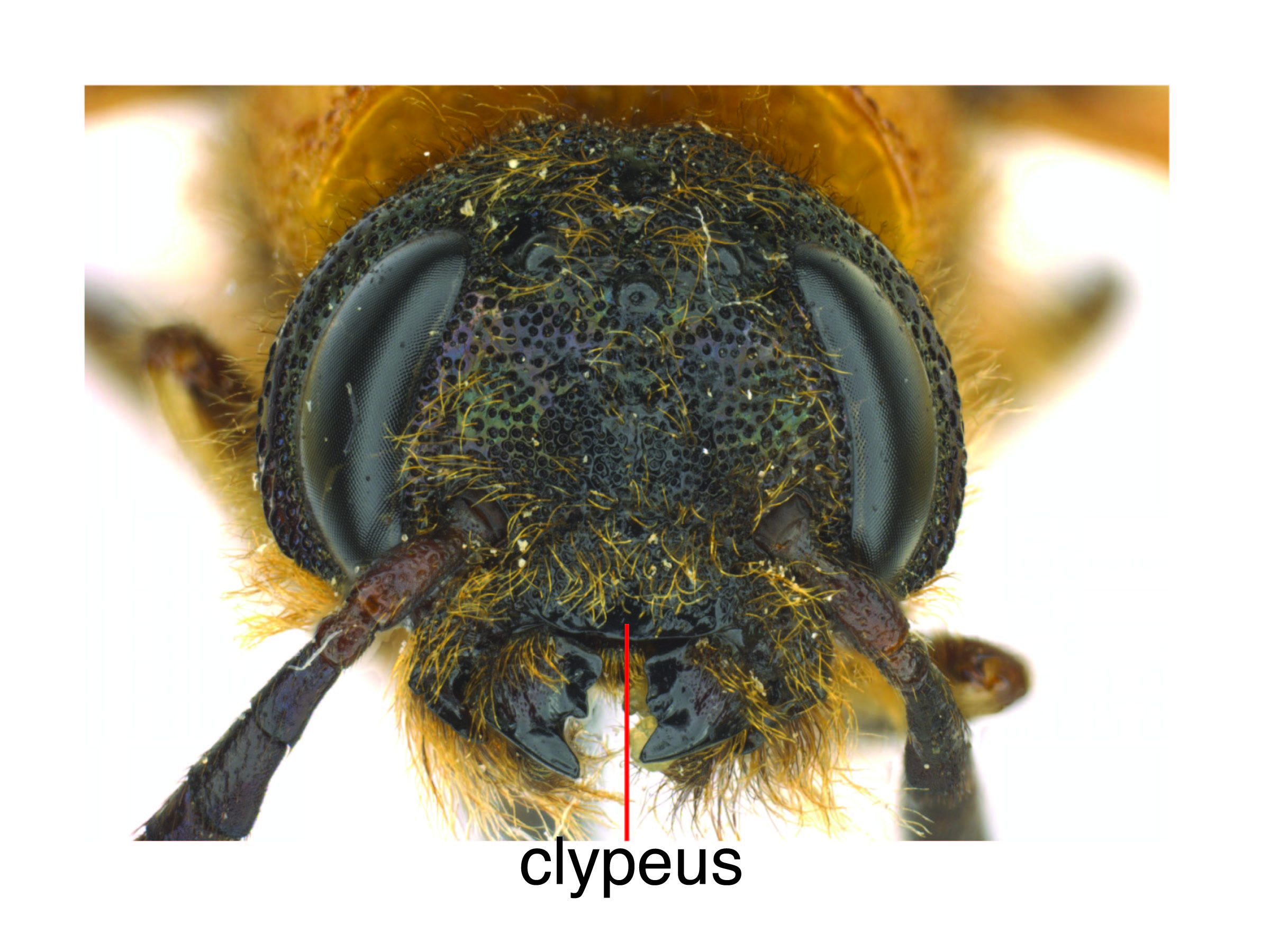 as measured at the basebase:
as measured at the basebase: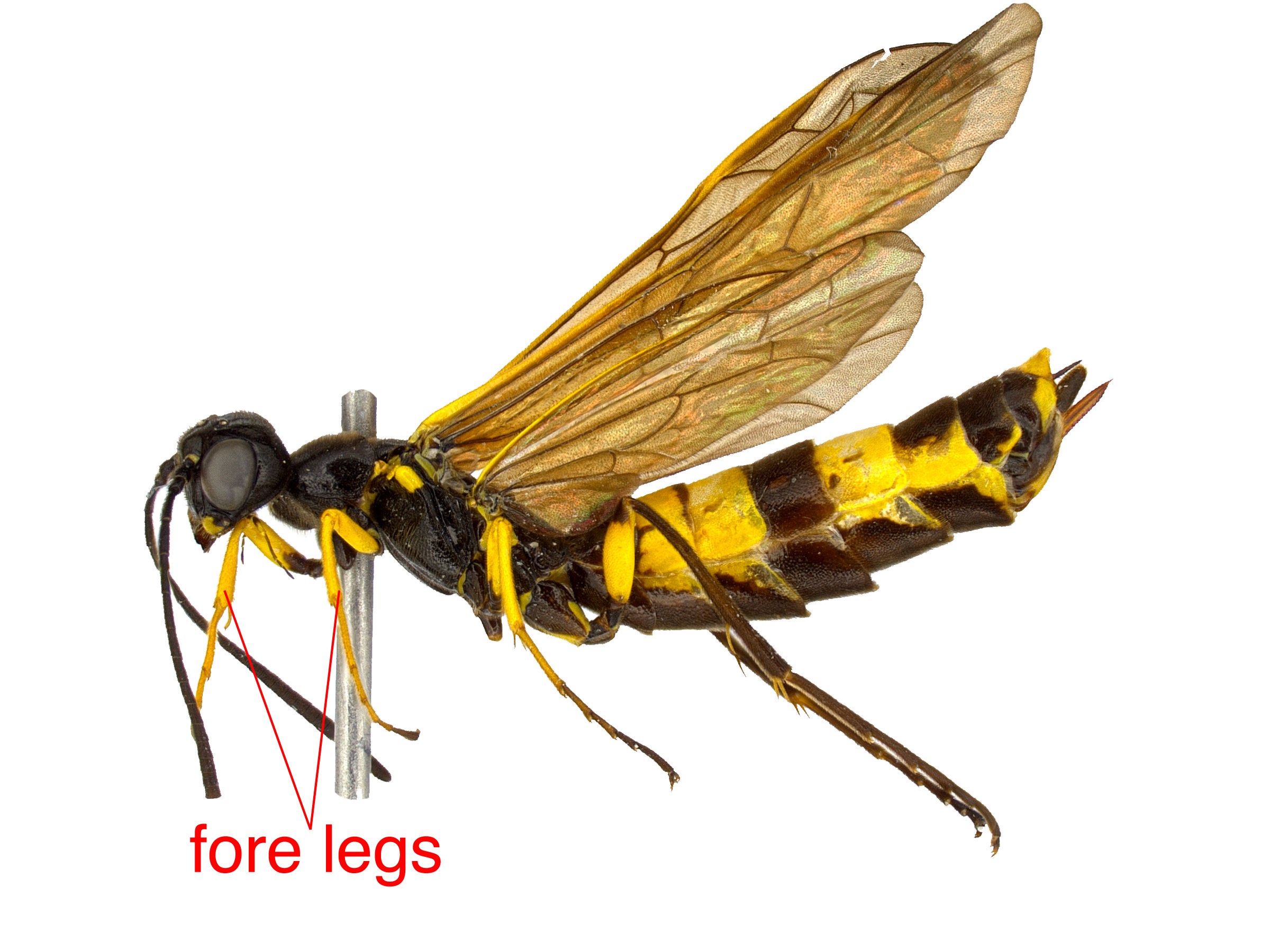 (Goulet 1992Goulet 1992:
(Goulet 1992Goulet 1992: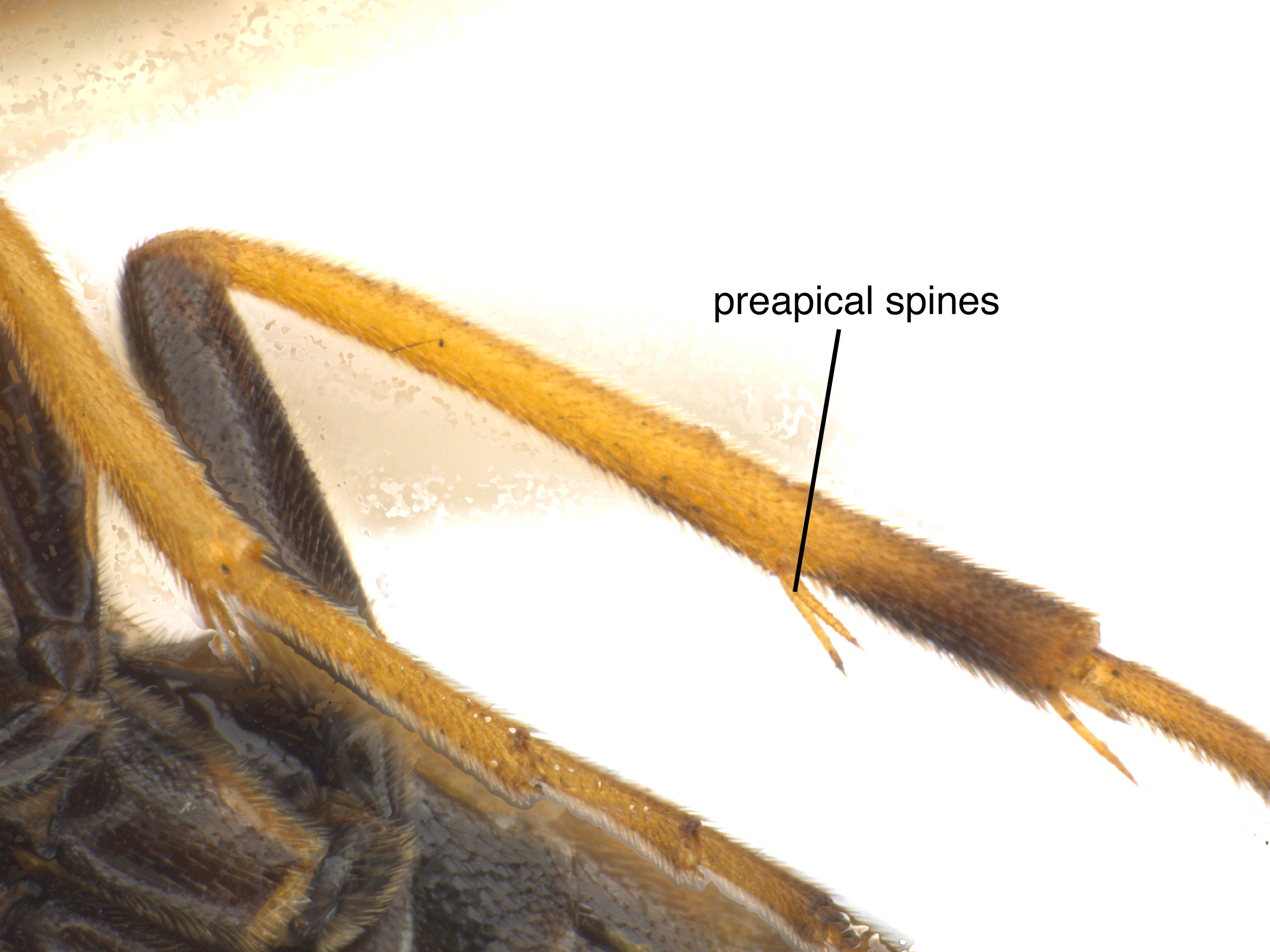 tibial spurs on the mid legmid leg:
tibial spurs on the mid legmid leg: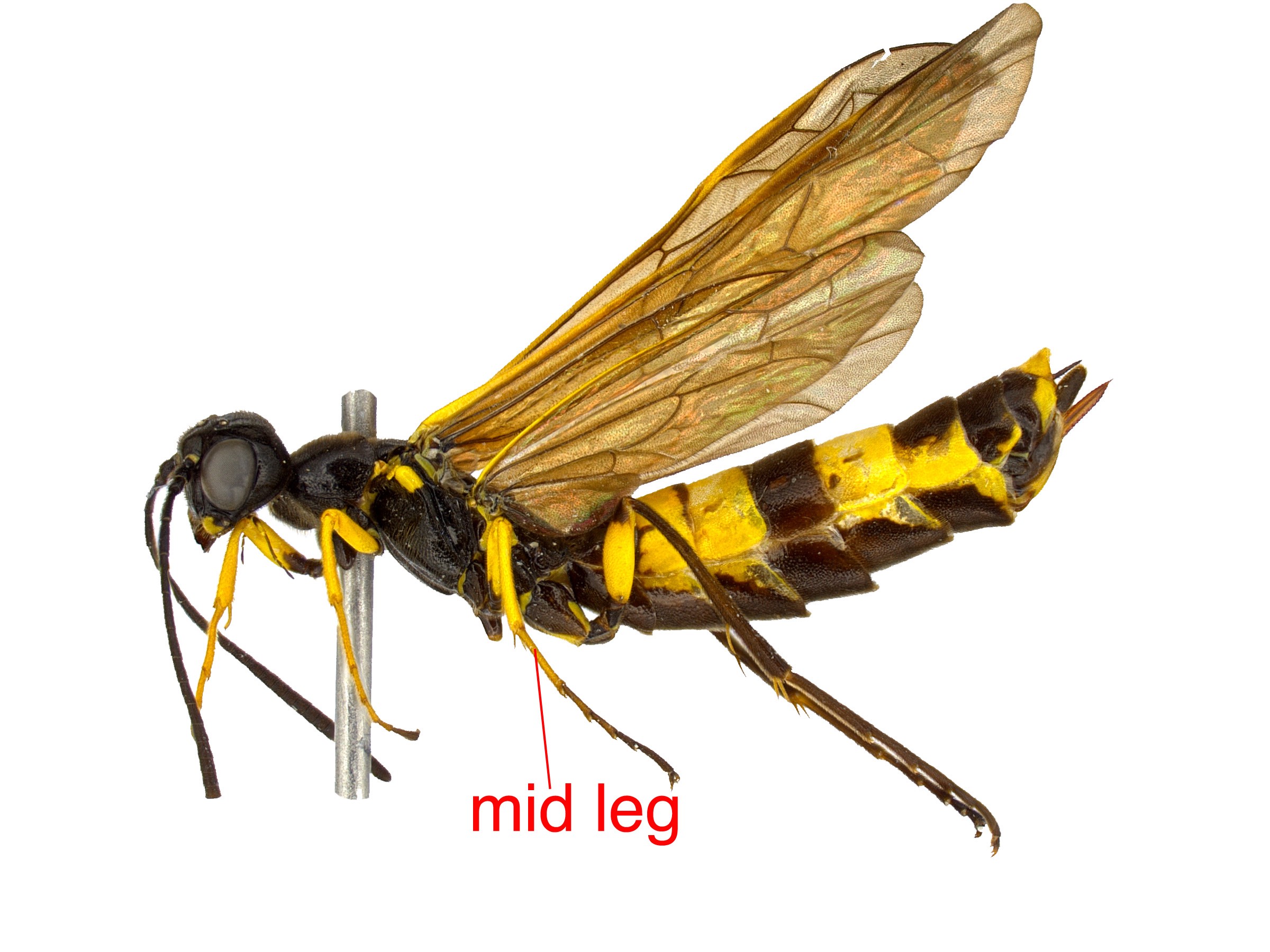 (Goulet 1992Goulet 1992:
(Goulet 1992Goulet 1992: with 26 or more segments (Goulet 1992Goulet 1992:
with 26 or more segments (Goulet 1992Goulet 1992: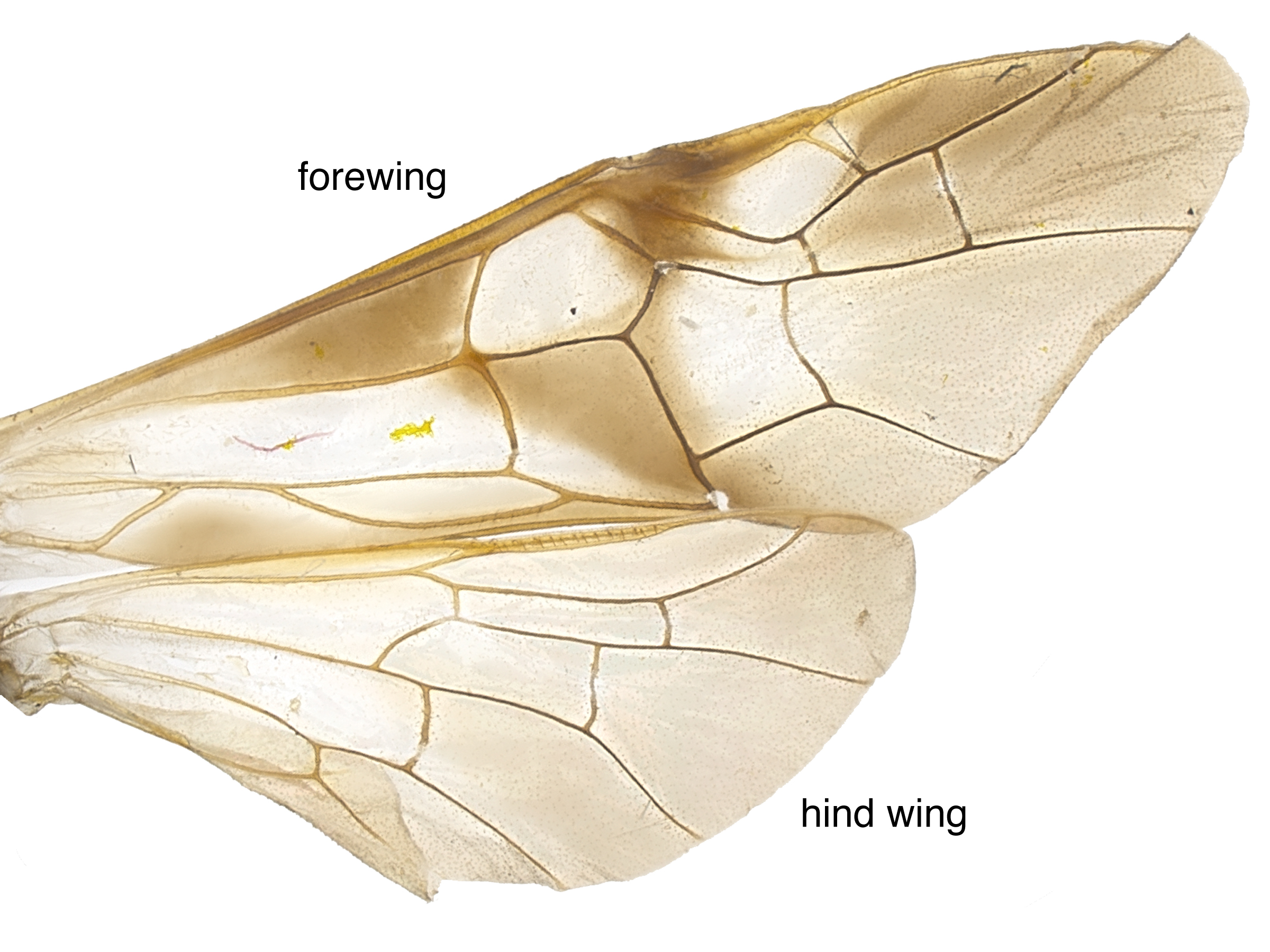 located basalbasal:
located basalbasal: Sc clearly separated from veinvein:
Sc clearly separated from veinvein: R, not fused (Goulet 1992Goulet 1992:
R, not fused (Goulet 1992Goulet 1992:Xyelidae can be distinguished from other sawfly families by the long ovipositorovipositor:
the female organ that deposits eggs and is used to drill into plant tissue, located at the apex of the abdomen, made up of the lance and lancet
 and a characteristic elongate third antennal segment that is wider than the remaining flagellumflagellum:
and a characteristic elongate third antennal segment that is wider than the remaining flagellumflagellum:
the third section of the antennae that includes all the segments beyond the pedicel; segments of the flagellum are known as flagellomeres
 . Xyelecia can be distinguished from Xyela and Pleroneura by the veinvein:
. Xyelecia can be distinguished from Xyela and Pleroneura by the veinvein:
a tube-like, often darkened, structure on the wings
 Sc and the number of antennal segments. It can be distinguished from Macroxyela and Megaxyela by the location of the Sc2/R junction on the fore wingfore wing:
Sc and the number of antennal segments. It can be distinguished from Macroxyela and Megaxyela by the location of the Sc2/R junction on the fore wingfore wing:
the anterior wing of each pair of wings; usually the largest wing of the pair
 (Ross 1932, Goulet 1992Goulet 1992:
(Ross 1932, Goulet 1992Goulet 1992:
Goulet H. 1992. The genera and subgenera of the sawflies of Canada and Alaska: Hymenoptera. Symphyta. The insects and arachnids of Canada. Part 20. Agriculture Canada Publication.).
none
Larvae are recorded feeding on Abies concolor (white fir) (Smith 1967, Smith and Middlekauff 1987Smith and Middlekauff 1987:
Smith DR and Middlekauff WW. 1987. Suborder Symphyta. In: Stehr FW ed. Immature Insects. Kendall/Hunt Publishing Company. Vol. 1: 754 pp.).
The life history of Xyelecia is not well-described. Larval morphology suggests that X. nearctica is a leaf bud feeder, much like related genus Pleroneura, which also feeds on fir trees (Smith 1967bSmith 1967b:
Smith DR. 1967b. A review of the larvae of Xyelidae, with notes on the family classification (Hymenoptera). Annals of the Entomological Society of America 60 (2): 376-384.).
World: Xyelecia nearctica occurs in North America and X. japonica occurs in Japan (Togashi 1972Togashi 1972:
Togashi I. 1972. Discovery of the genus Xyelecia Ross (Hym., Xyelidae) from Japan. Kontyu 40 (2): 87-89., Smith 1978Smith 1978:
Smith DR. 1978. Suborder Symphyta (Xyelidae, Parachexyelidae, Parapamphiliidae, Xyelydidae, Karatavitidae, Gigasiricidae, Sepulcidae, Pseudosiricidae, Anaxyelidae, Siricidae, Xiphydriidae, Paroryssidae, Xyelotomidae, Blasticotomidae, Pergidae). Hymenopterorum Catalogus 14: 1-193., Taeger et al. 2010Taeger et al. 2010:
Taeger A, Blank SM, and Liston AD. 2010. World Catalog of Symphyta (Hymenoptera). Zootaxa 2580: 1-1064.).
North America: Xyelecia nearctica is mostly recorded from the Pacific Northwest, with multiple collections in California, Oregon, Idaho, and British Columbia (Smith 1964Smith 1964:
Smith DR. 1964. Description of the male of Xyelecia nearctica , with comments on the genus (Hymenoptera: Xyelidae). The Pan-Pacific Entomologist 40 (1): 54-56., Smith 1978Smith 1978:
Smith DR. 1978. Suborder Symphyta (Xyelidae, Parachexyelidae, Parapamphiliidae, Xyelydidae, Karatavitidae, Gigasiricidae, Sepulcidae, Pseudosiricidae, Anaxyelidae, Siricidae, Xiphydriidae, Paroryssidae, Xyelotomidae, Blasticotomidae, Pergidae). Hymenopterorum Catalogus 14: 1-193.).
Map data from: GBIF.org (26 June 2019) GBIF Occurrence Download Xyelecia
Details about data used for maps can be found here.